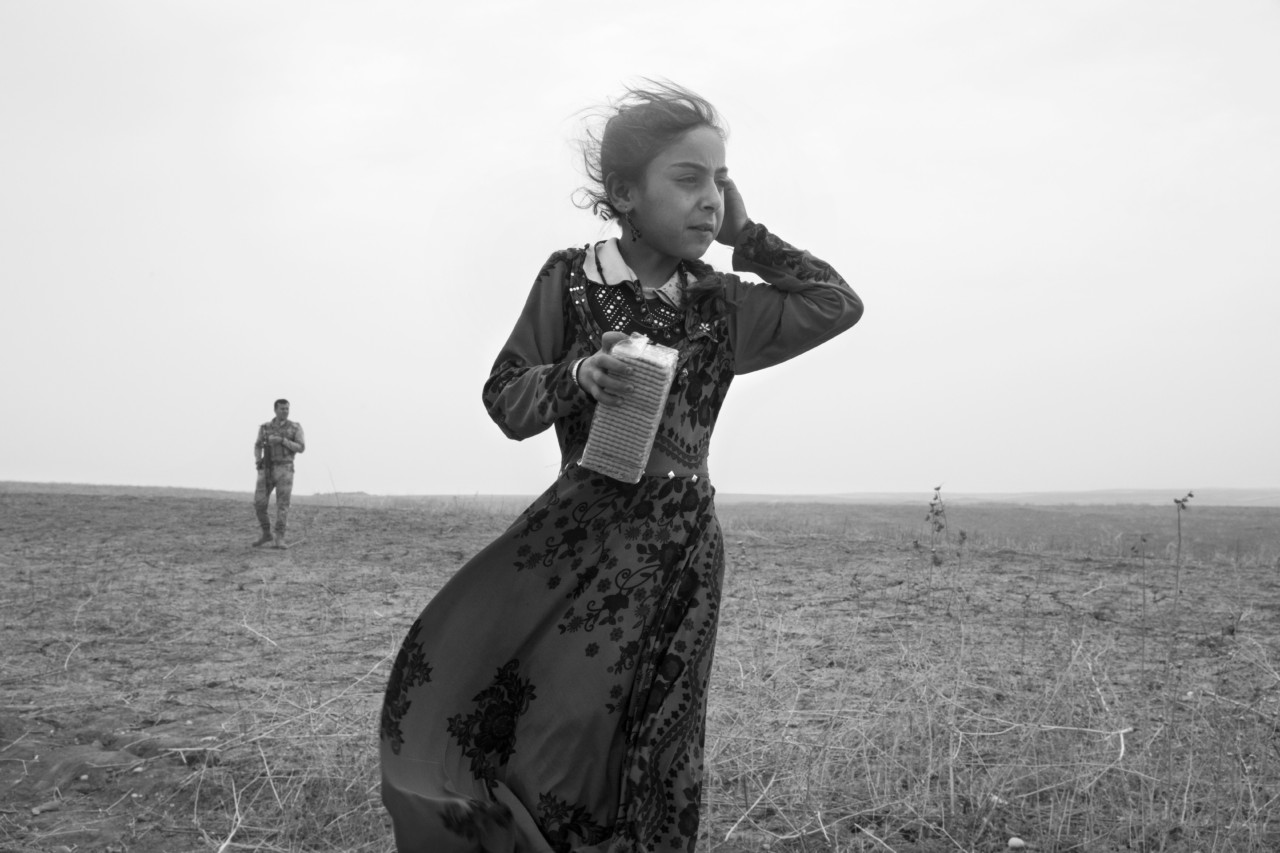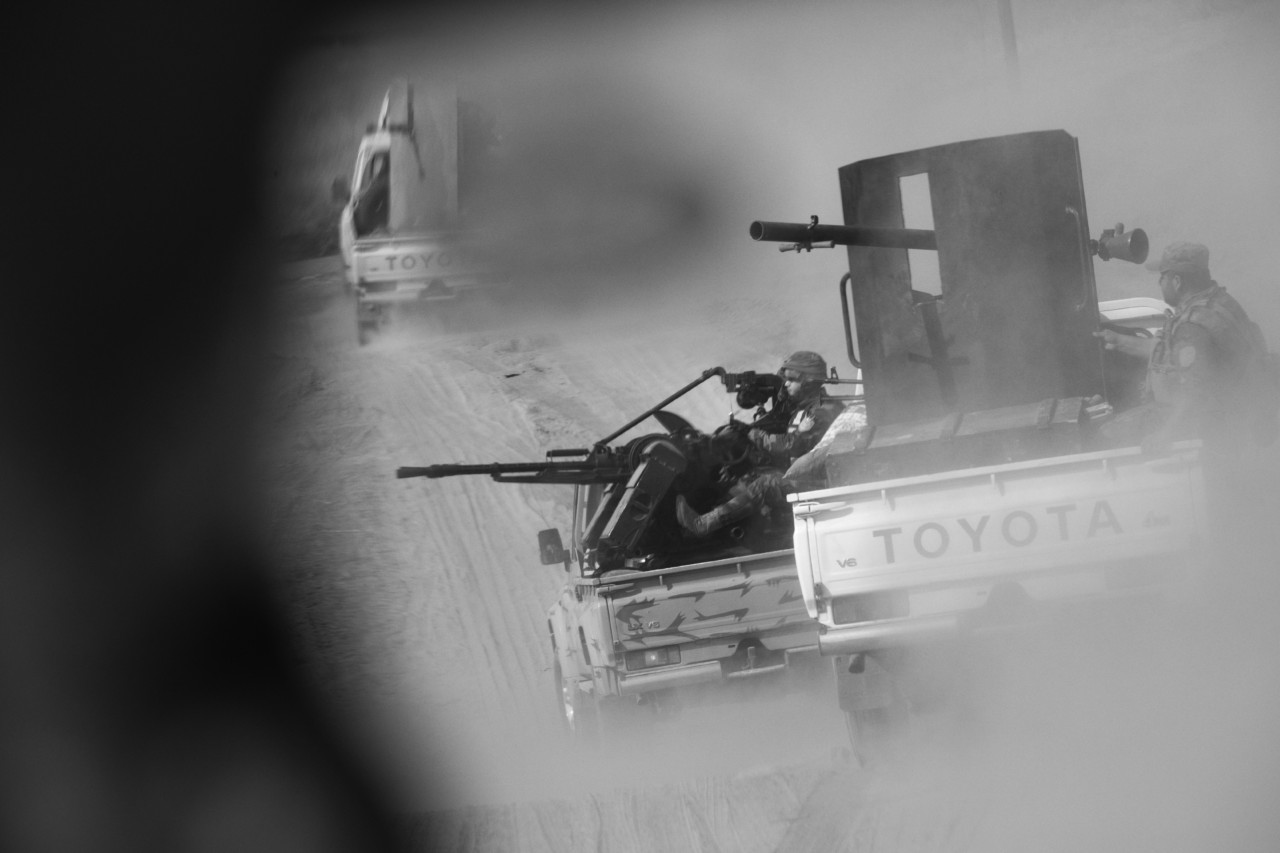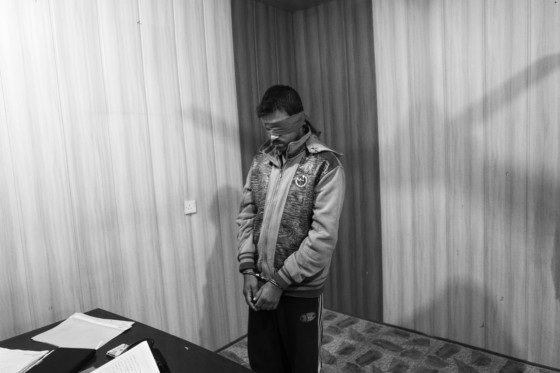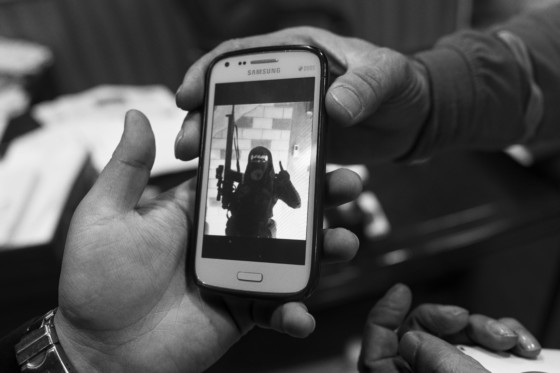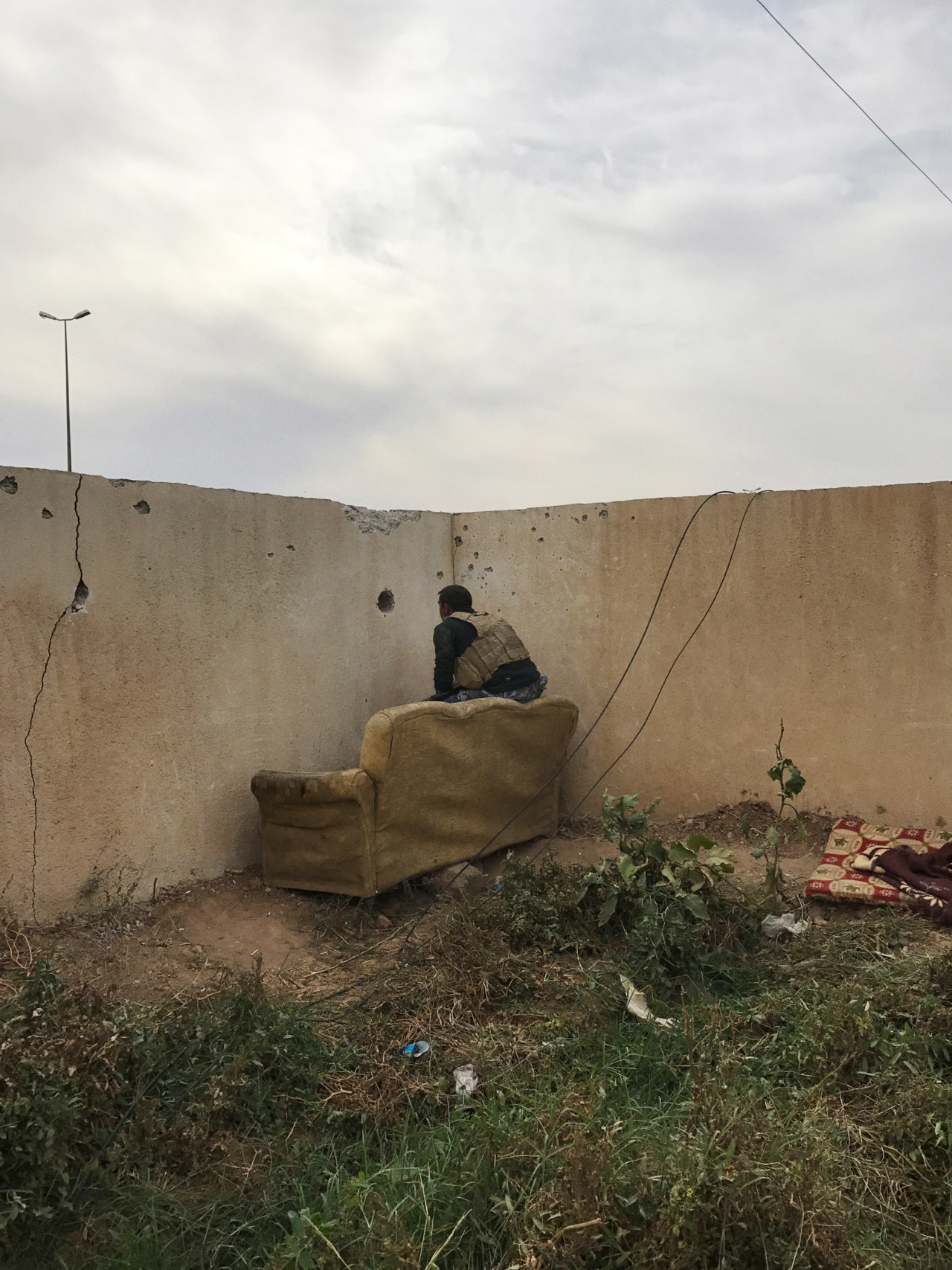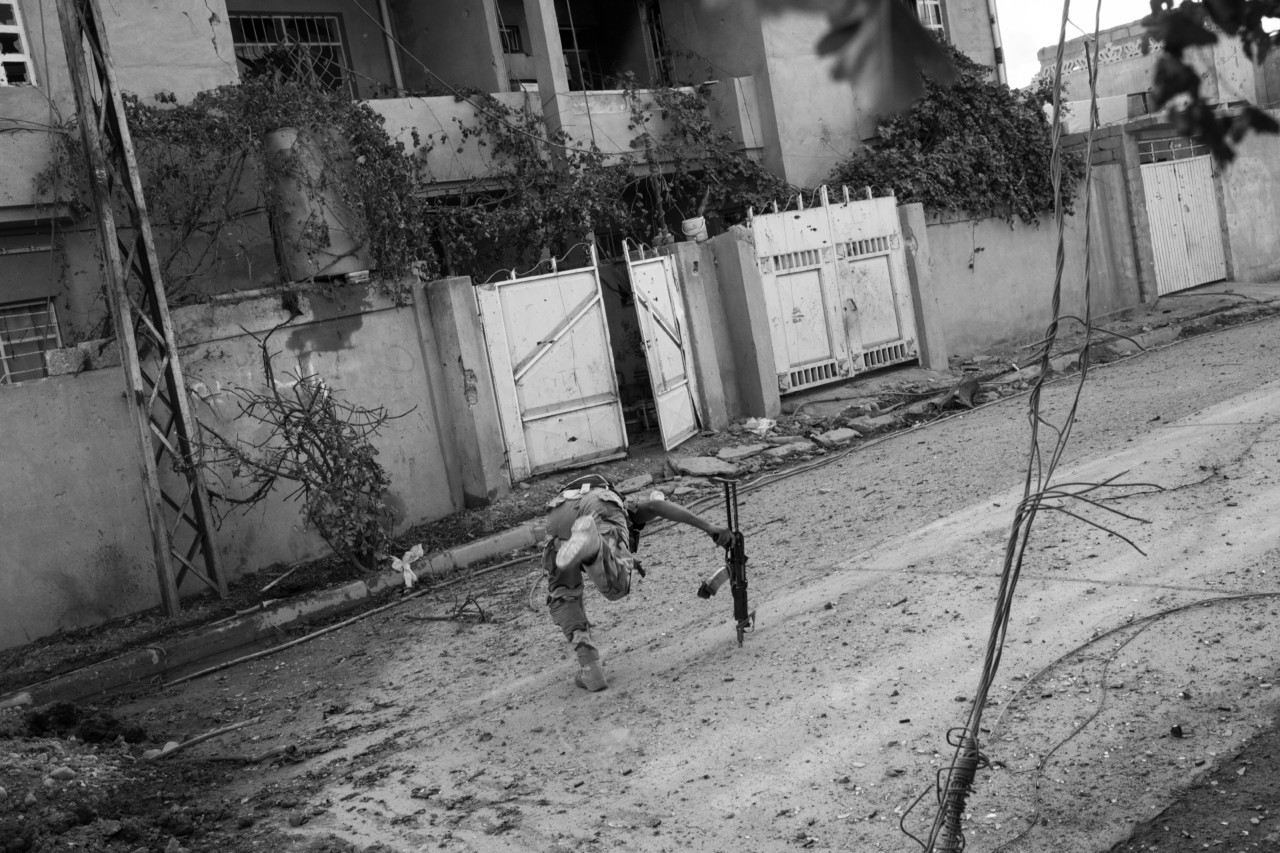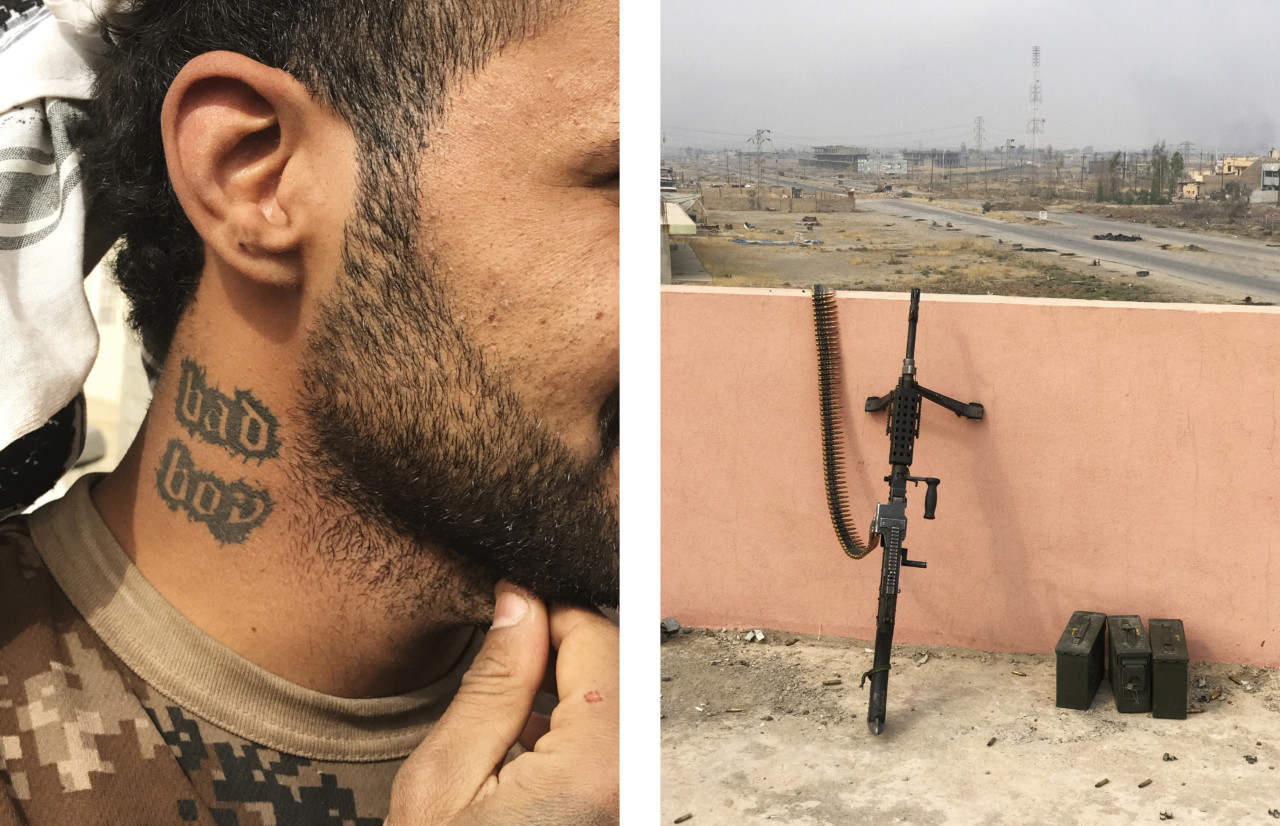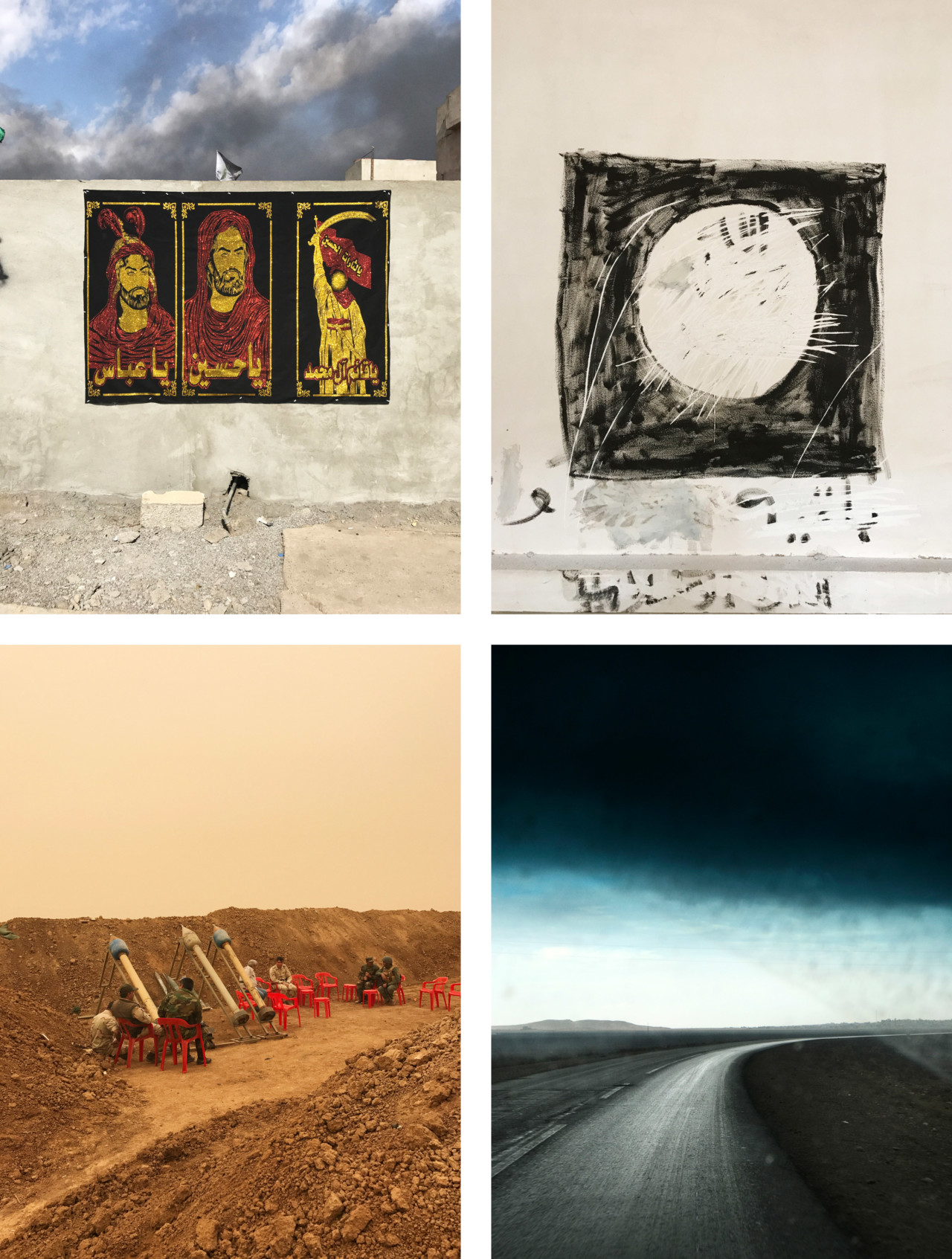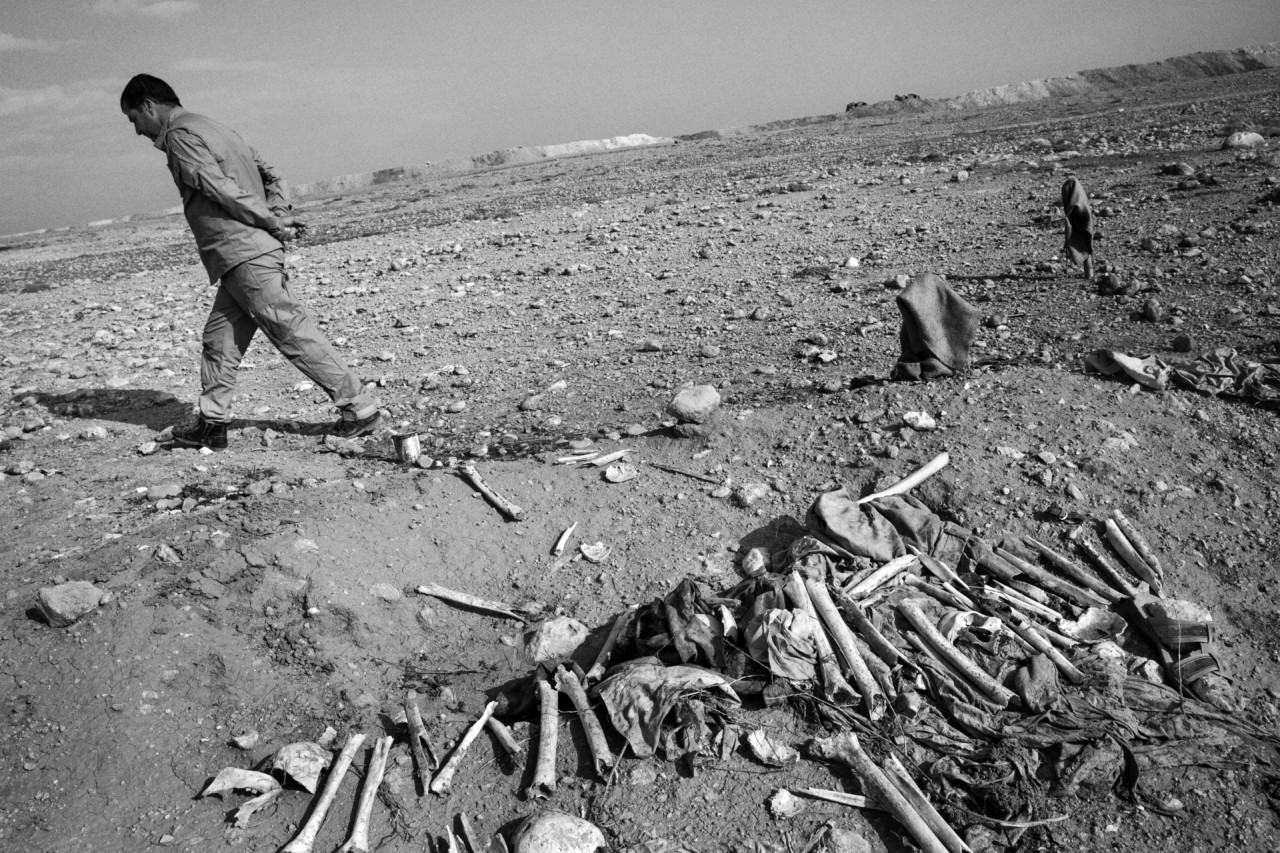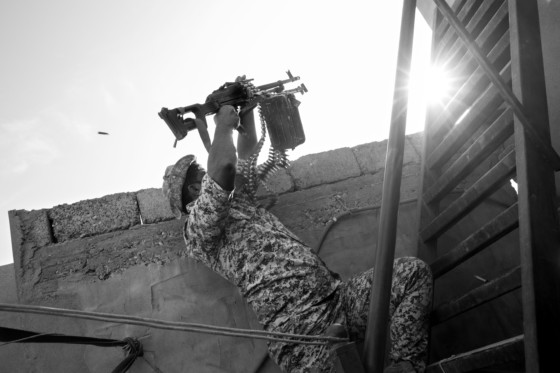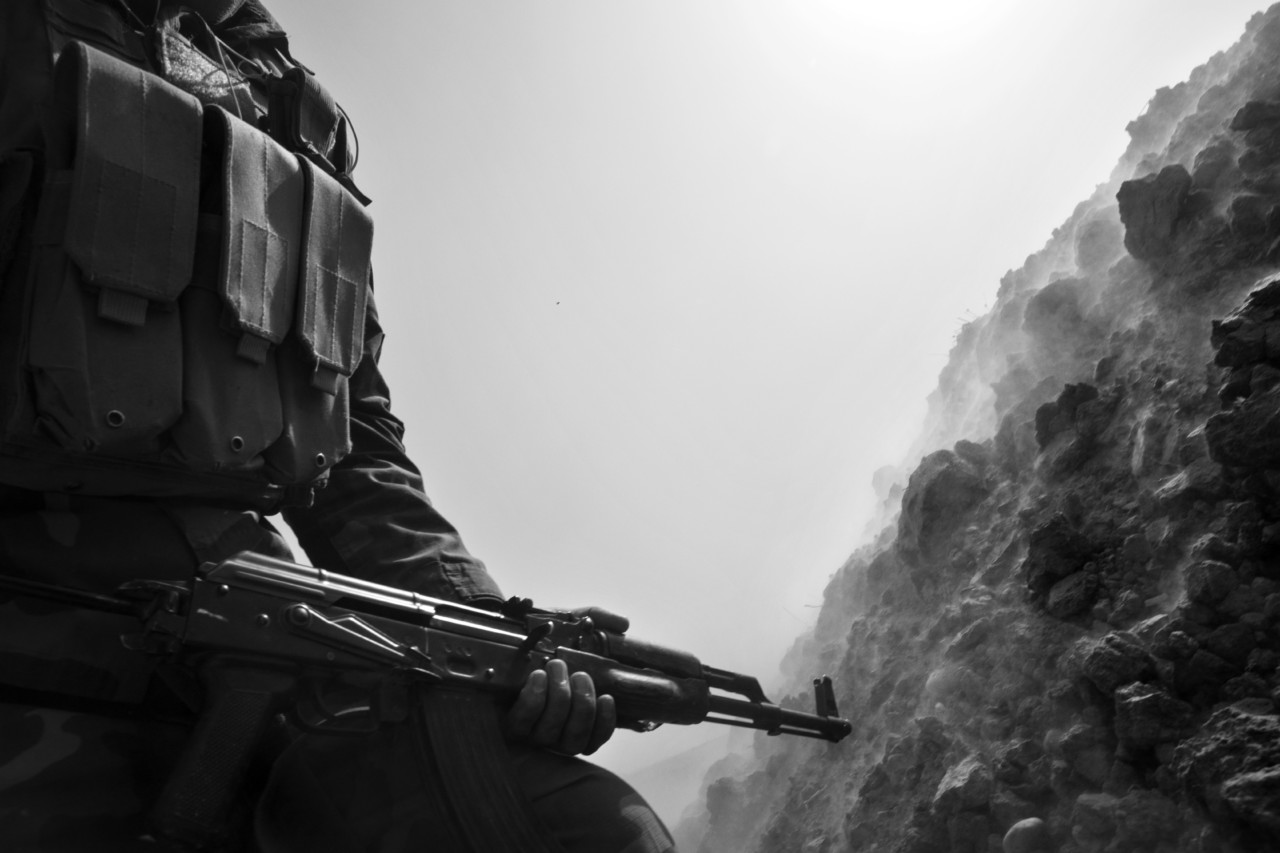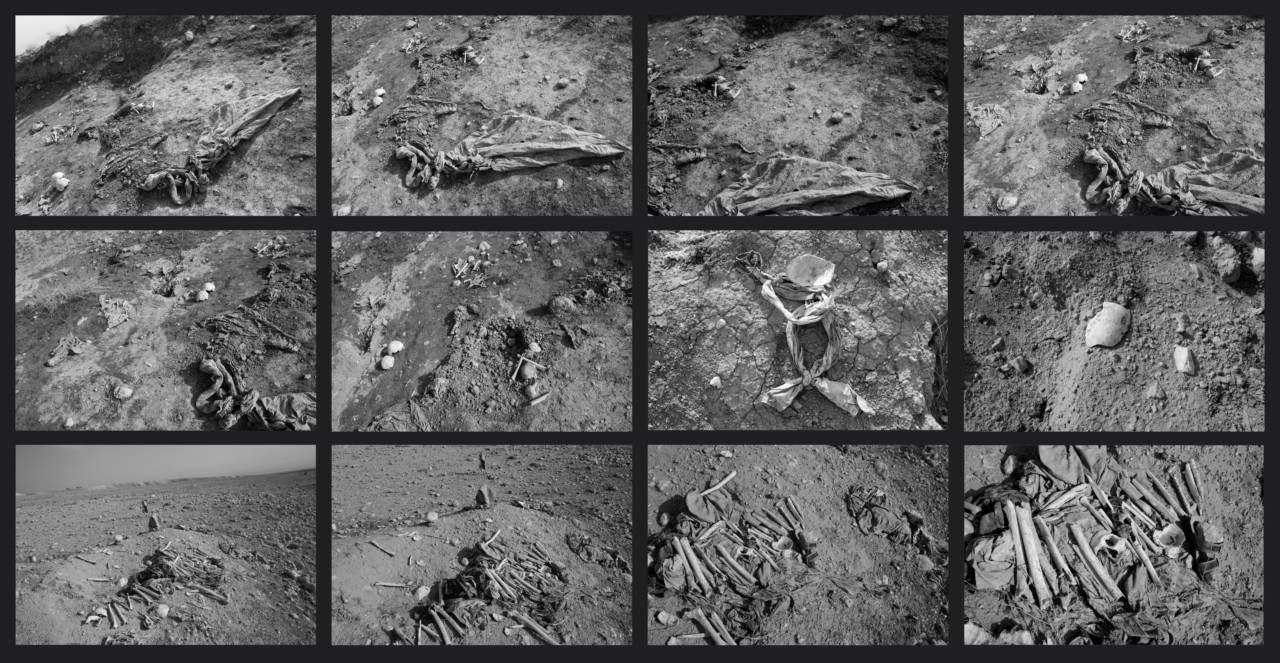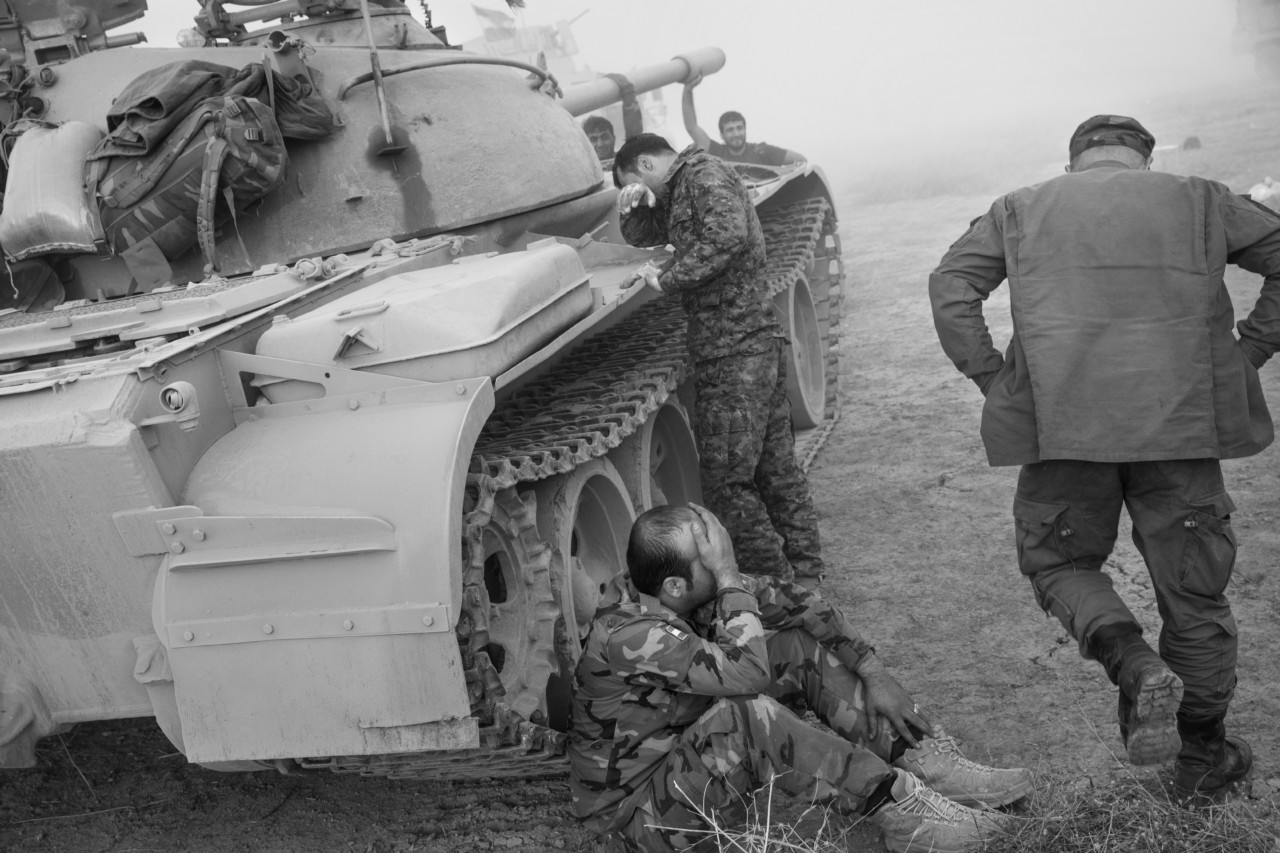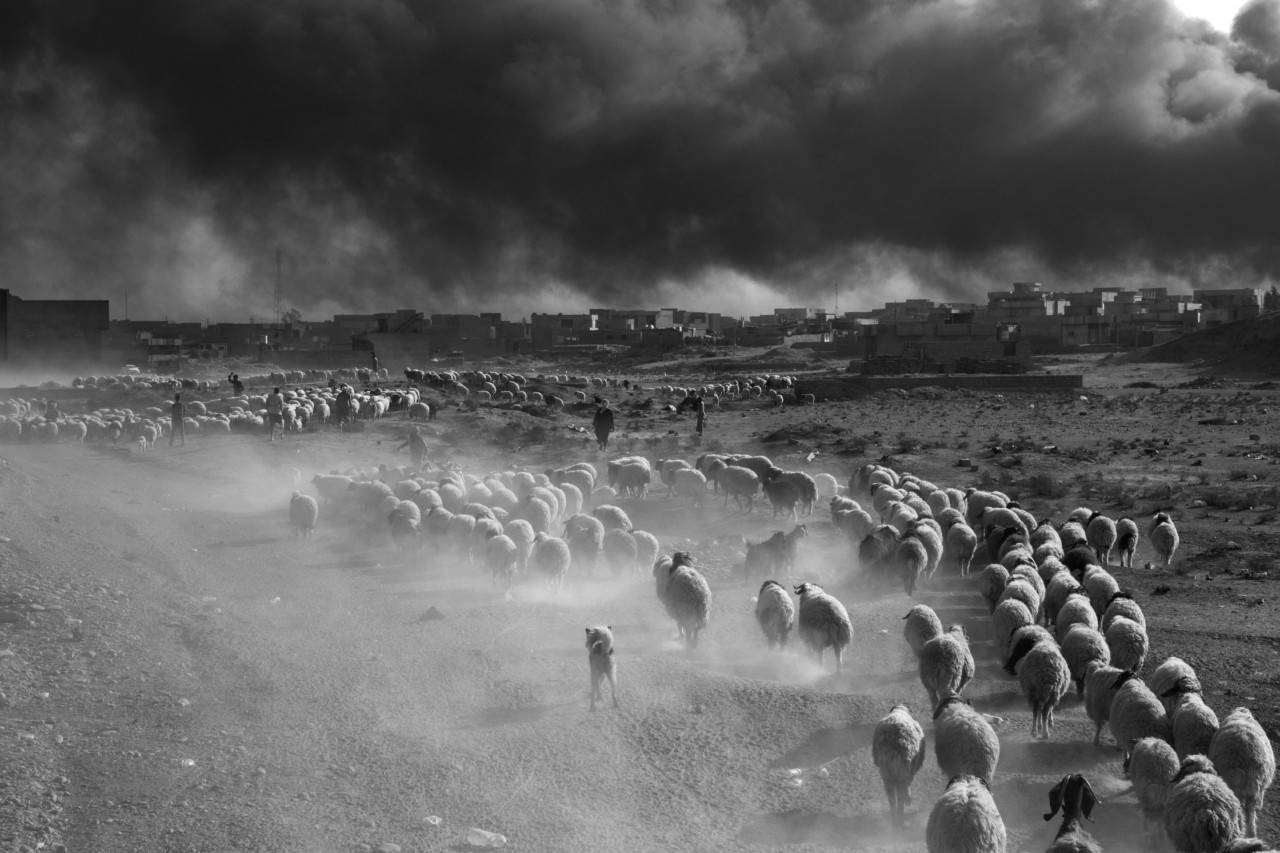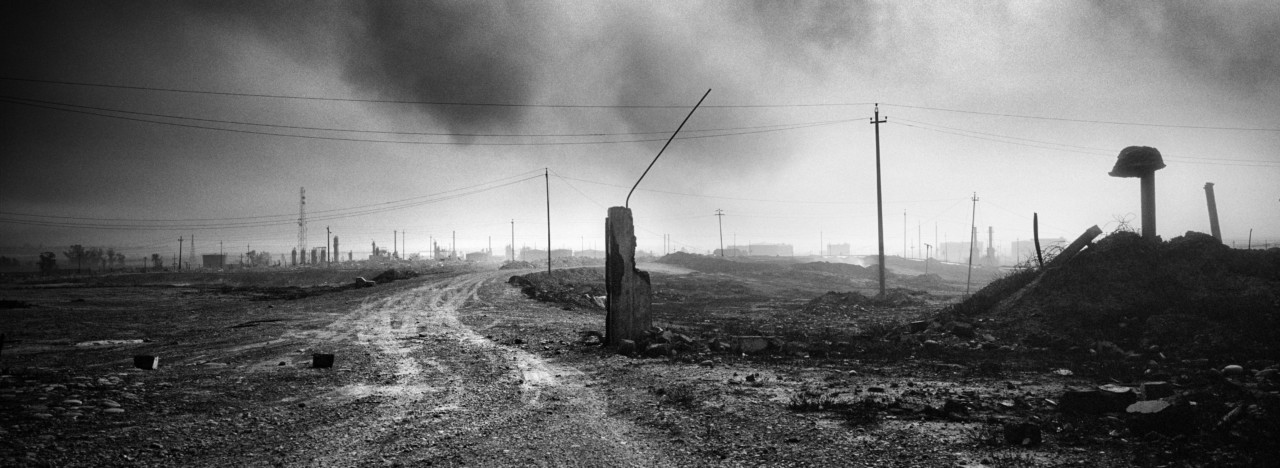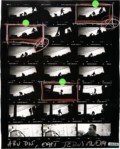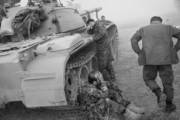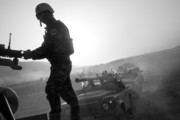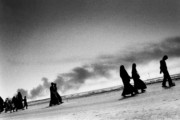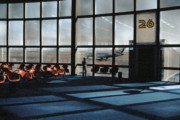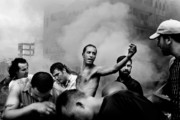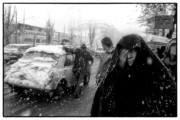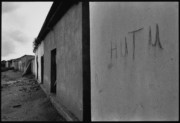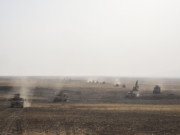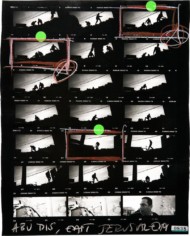They Will Have to Die Now
Paolo Pellegrin's photographs from Iraq alongside an exclusive excerpt from journalist James Verini's new book
Having first worked together reporting from Gaza in 2011, Magnum photographer Paolo Pellegrin found himself once more alongside journalist James Verini, near the besieged city of Mosul, Iraq, in the fall of 2016.
The battle for Mosul saw the Iraqi military and Kurdish forces – with support from coalition forces – eventually liberating the city which had been held by Islamic State (IS) since June 2014. The battle lasted over nine months and saw brutal house-to-house fighting, described by the Pentagon as “the most significant urban combat since WWII”.
Verini, reporting from the city for National Geographic and New York Times Magazine, witnessed the battle’s early stages, the height of the fighting, and the eventual capitulation of Mosul’s occupiers. His new book, THEY WILL HAVE TO DIE NOW: Mosul and the Fall of the Caliphate, charts the bloody siege of Mosul, setting it in the context of the Islamic State’s rise and fall, within the millenia-long strife-plagued history of the beguiling city of Mosul, and within the broader history of Iraq.
The book’s cover features Pellegrin’s photograph of residents of the village of Bajurbuk, near Bashiqa, Iraq, who fled IS and found refuge behind Kurdish Peshmerga lines. Here, we share an exclusive extract from the forthcoming book, accompanying Verini’s words with a selection of Pellegrin’s photographs and previously unseen color iPhone pictures which span his time covering the fight for Iraq. These images do not necessarily correlate to the specific events in the text.
THEY WILL HAVE TO DIE NOW: Mosul and the Fall of the Caliphate will be released September 17, published by W. W. Norton & Company.
Iraq and its neighbors are lazily spoken of as congenital grudge holders, countries that refuse to get past the past. But Iraqis, I find, have a genius for putting things behind them. They excel at expedient commemoration. By the time of the rise of the Islamic State, they had got the metabolizing of misfortune down to near simultaneity. What choice did they have?
A student of Iraqi politics said this to me: ‘If you’re living in Nineveh, you’ve switched masks many times in the last fourteen years. To us it’s quite unthinkable to join a terrorist group knowing that you won’t always be in it. It won’t necessarily follow you. You’ll get forgiven. In Iraqi culture, you can kill people, you can kill people’s siblings, and you can be forgiven. It doesn’t always work, but there’s an expectation you’ll have a good chance. You can’t take vengeance for everything bad someone’s ever done to you in Iraq. If you did, every Iraqi would be dead.’
Though the Caliphate lasted barely more than three years in Iraq, the period produced more memorials than anyone cares to count. Even before the battle for Mosul, public shrines to war martyrs were everywhere, from the climes of the Zagros to the fishing villages of the Gulf, the Iranian border to the Arabian desert. Placards and signboards and billboards and photograph collages and bouquets of plastic flowers and candles, sticking and hanging and piled and leaning at roadsides and checkpoints and intersections, at mosques and restaurants, at highway crossings, on bridges, on overpasses, on hillsides and riverbanks, nailed and pasted and taped onto walls and lampposts and windows and guardrails.
I arrived in Baghdad in July of 2016 in the midst of a bombing spree. A car bomb had just killed three hundred people in Karrada, a mainly Shia commercial district. The torn building façades on the market street were covered over with black netting, like a vast crepe, from which hung poster-size photos of the victims, if not three hundred then very nearly that many. I drove to Dululiya, a town on the Tigris near Tikrit, where two years earlier the residents had banded together to keep the Islamic State out, a rare thing in those days when the jihadis seemed unstoppable, especially in Sunni towns. At the entrance to Dululiya was a new cemetery for the citizen-soldiers who died in the Battle of the Four Million Rounds, as the fight for the town came to be known. (Who conducted the tally of bullets, no one is sure.) A low, red-painted cinderblock wall surrounded several dozen graves, each grave topped with a placard-sized photo of the deceased. The cemetery is on the roadside, directly next a checkpoint, so that, driving into the town, you must look at the faces, you have no choice. I continued north, to Mount Sinjar, where thousands of Yazidi men were slain and their wives and daughters and sisters forced into sex slavery, and where Kurdish peshmerga troops fought to protect them and Kurdistan. A highway hillside had been terraced and the terraces planted with what appeared from the distance to be boxy saplings. As I approached, they turned into wood-encased television sets. Only when I was in front of them did I realize these were plaster reliquaries, their exteriors painted brown, white inside, each containing the framed photo of a slain peshmerga.
The only sector of Iraq’s economy that wasn’t devastated by the Caliphate was printers, who were kept alive with death. After a bombing or a firefight, pictures of the deceased were sent electronically or hand-delivered to a print shop, where the images were enlarged and decorated, icons and symbols superimposed around the victims’ faces. Flowers, guns, flags, birds, Korans. If the dead person was Shia, the shrine of the Imam Hussein in Karbala or of the Caliph Ali in Najaf might oat near their face; if Sunni, the Dome of the Rock in Jerusalem; if a Kurd, the silhouette of the Zagros. The memento mori came in all sizes. They ranged from wallet snapshots to, in the case of the so-called Speicher Massacre, one of the largest plots of land in Iraq.
In the second week of June 2014, after seizing Mosul, jihadis encircled a group of Iraqi Air Force cadets as they tried to escape the Tikrit Air Academy, which was still known by its American name, Camp Speicher. They were brought to what had once been Saddam’s palace compound in Tikrit, a city about halfway between Baghdad and Mosul on the Tigris. On a riverbank escarpment, they were executed one by one, most by way of bullets to the back of the head. Some were kicked into the water, others tossed into mass graves. The graves were so large they were picked up by satellite cameras.
"The Islamic State, whatever else it might be, was a death cult, it was now all too obvious"
- James Verini
Though it was unapparent at the time—it took place before Mosul was seized—the Speicher Massacre would prove the first major reverse for the Islamic State. The killings disgusted many moderate Sunnis who had until then identified with the jihadis’ mission—for it wasn’t just to fed-up Iraqi Sunnis that the group’s message appealed. Support was expressed by Sunnis in many countries, and not just by extremists, but by people like Abu Omar and Abu Fahad, people you and I would consider sane and sympathetic. It appealed to Sunnis who looked at the wider Sunni stage—the selfish monarchies of the Gulf; the brutal, secularist military of Egypt, which had deposed and imprisoned the legitimately elected Muslim Brotherhood; the imperious Turks; Iran-dominated Lebanon—and saw a void of valid leadership. To the many Sunnis who felt that Iran had taken control since the American invasion of Iraq and worried that this development would be their ruin—and it is difficult to find a Sunni person in Iraq, or beyond, who doesn’t hold this fear to some extent—the Islamic State’s revolution felt, in ways, like a long-awaited answer to the Iranian revolution; 2014 was, in a sense, the Sunni 1979. Anyway, they held out hope that it might turn out that way. But, seeing the Speicher videos, sympathizers who had explained away the Islamic State’s carnage as rumor, or propaganda, or the unfortunate results of a just war, could no longer fool themselves. Over fifteen hundred unarmed cadets, the great majority of them Shia, were executed. The Islamic State, whatever else it might be, was a death cult, it was now all too obvious.
It was also the Speicher Massacre that convinced Iran it had to get involved in the war against the Islamic State, and the Iraqi government could not a afford to turn down the help even if it wanted to. In early 2015, a combination of Iraqi forces and Iran’s al-Quds Force, a branch of the Republican Guard that answers directly to the Ayatollah, attacked jihadi-held Tikrit. In April of that year they won the city back. For Iraqis who couldn’t brook the Islamic State but also worried Baghdad was doing the bidding of Tehran, al-Quds’s presence was confirmation of their suspicions, but even they had to admit that the victory in Tikrit was a desperately needed bit of good news. It was the first major city to be recovered from the Caliphate. For the next ten months, the war seesawed, with the Islamic State losing and recovering ground, the Iraqi forces fighting ably one day and ineptly the next. Then, in early 2016, the troops took Ramadi, the first city the jihadis had seized, two years before. This would prove the hinge of the war.
THEY WILL HAVE TO DIE NOW: Mosul and the Fall of the Caliphate, is published by W. W. Norton & Company; and on sale September 17. It is available via James Verini’s site, here.


